Montana Sun and Our Skin
A DM Roundtable - Skin Care Treatment Professionals
Sunny Montana and Our Skin
Over time the effects of sun exposure in our sunny, higher altitude environment can do harm to our skin. Here are some good practices and advice fromOver time the effects of sun exposure in our sunny, higher altitude environment can do harm to our skin. Here are some good practices and advice from Montana’s best professionals for skin care treatment:
Hugh Hetherington, M.D., has been on the medical staff of Bozeman Deaconess Health Services and practiced at Bozeman Deaconess Cosmetic Surgery and Bozeman Deaconess Ear, Nose & Throat for over 15 years. He has specialized training in the trans-umbilical breast augmentation (or TUBA) and is the only physician in Montana to perform this procedure.

Charlotte Kutsch, M.D., FAAD, had a private practice in Bozeman from 1995-2010 and from 2011 to the present. Now she is with the Western Montana Clinic in Missoula.
Dr. Wolpoe of the Billings Clinic is board-certified in Otolaryngology-Head and Neck Surgery as well as Facial Plastic and Reconstructive Surgery. He specializes in reconstructive and aesthetic treatments of the head and neck.
Tracy Rausch is an Internal Medicine physician currently practicing aesthetic medicine with Montana Medical Aesthetics Clinic in Billings. She is a native Montanan and received her medical training from the University of Washington in Seattle in 1996.
Sun exposure can leave skin with hyperpigmentation (brown spots). What treatment do you recommend as an effective way for patients to treat or minimize this condition?
Hetherington: At Bozeman Deaconess Cosmetic Surgery, our go-to treatment for hyperpigmentation caused by sun exposure is Intense Pulsed Light or PhotoFacial. It is also among the most gentle and non-ablative options for dramatic skin rejuvenation and can drastically reduce the signs of aging on the face, neck, décolleté, and hands. Over time, natural skin aging and exposure to UV radiation causes the skin to produce pockets of irregular pigmentation. Photofacial rejuvenation helps even out pigmentation and also improves skin tone. Consider IPL for the following conditions: hyperpigmentation, rosacea, poikiloderma (red neck), age/liver spots, pigmented lesions, and scar discoloration.
Wolpoe: Once we establish that the patient is suffering only from sun-induced hyperpigmentation we can offer the patient a few different options in office: Candela/Syneron Intense Pulsed Light (IPL) machine, a glycolic or lactic acid chemical peel; we also encourage patients to use hydroquinone which helps to bleach the spots and/or tretinoin or retinol which also stimulate epithelial cell turn over.
Sun exposure can affect the texture of skin and it’s elasticity. What practices have you found to be effective in restoring and rejuvenating the skin’s smooth texture?
Wolpoe: As people age they begin to lose the battle between collagen production and degradation, lose moisture and subcutaneous fat in their skin. Our treatments for this therefore focus around increasing collagen production and restoring volume when necessary. Firstly, because IPL improves collagen production it can smooth out fine lines and wrinkles as can peels. Secondly, laser resurfacing is also effective in smoothing skin.
The majority of lasers are fractionated, meaning they only treat a portion of the skin in an effort to minimize down time. There are two major types of fractionated lasers, non-ablative which do not disrupt the epidermis but rather stimulate collagen production by inducing targeted dermal injury, and ablative lasers which remove some of the skin surface stimulating robust collagen production. Of the two lasers ablative usually produces the most profound effect on skin tightening and wrinkles but also more down time than non-ablative lasers. Our non-ablative laser is the E-matrix from Syneron/Candela which utilizes radiofrequency and is a bit more powerful than some of the other non-ablative lasers on the market. It is effective for skin tightening, acne scars, and mild wrinkles. Our ablative laser is the CO2RE. This laser is a carbon dioxide laser, the gold standard for all ablative lasers. This machine can be adjusted to treat a wide variety of problems from fine lines and wrinkles to deeper wrinkles and acne scars. Other modalities in our office used to increase collagen production are the Rejuvapen, a microneedling device that in a virtually painless manner makes tiny holes in the skin surface into which healing factors can be infused. Just like an inflated balloon versus a deflated one, skin that is filled in subtle ways can look more smooth.
Hetherington: Two of our favorite treatments for improving skin texture and firmness are the Plasma Skin Regeneration (Portrait) or the DermaPen. Both treatments are great options for stimulating collagen production and creating tighter, smoother skin. Portrait® is not a laser, light treatment, or variation of anything else. It’s a new technology with unique capabilities. It is the only treatment actually proven to generate new collagen, not just at the surface, but below the surface for as long as a year after treatments.
DermaPen is another exciting treatment option for rejuvenating the skin. The Dermapen uses eleven, 33-gauge micro needles to stimulate the dermis. Dermapen fractional dermal-needling provides unparalleled response via a fractional delivery of needles creating micro-injuries into the epidermis and dermis at a rate of 1000/second. These needles vertically pierce the skin and enhance rejuvenation results. These micro-injuries to the skin encourage and harness the power of the body’s innate ability to repair the skin through the normal physiology of skin. The result is smoother, tighter skin. Dermapen is also an excellent choice for scars, including those caused by severe acne.
Rausch: Long-term exposure to UV radiation results in photodamage of human skin that is characterized by reduced epidermal and dermal thickness, wrinkles, dyspigmentation, coarse skin texture, and telangiectasias. Although they can be effective, ablative treatments require longer recovery periods, may result in scarring, and are not always a desirable option for patients. Broadband light offers a more gentle approach to treat skin aging and can provide impressive results. Regular maintenance treatments using Forever Young BBLTM functionally rejuvenates skin and delays skin aging. A recent groundbreaking study on BBL from Stanford University demonstrated that Forever Young BBLTM can restore gene expression of aged human skin to resemble much younger skin resulting in decreased skin elastosis and more uniform collagen deposition, leading to improvements in fine wrinkles and pigmentation. Patients who maintain a regular regimen of BBL treatments annually can reduce and delay the long-term signs of skin aging in a way that looks very natural. BBL delivers a pulse to tissue with precise on and off timing with controlled irradiance. Its broad range of wavelengths allows targeted treatment for many skin conditions. Since each pulse is cooled to the selected temperature, patients enjoy a comfortable treatment.
Sun exposure can leave skin with wrinkles. What treatment have you found to be effective in treating existing wrinkles and wrinkle formation?
Wolpoe: There are two types of aging — intrinsic and extrinsic. Intrinsic aging refers to the natural aging process combined with our genetics where collagen and subcutaneous fat decrease over time. Botox reduces the appearance and production of dynamic wrinkles. For wrinkles that have already formed we usually treat skin tightening and wrinkles with IPL, peels, microneedling, laser resurfacing as well as fillers to address specific wrinkles and to improve volume to reduce the appearance of wrinkles.
Sun exposure can affect your health. If you spot a mole or suspicious skin condition what steps do you take to diagnose and treat a condition that may be pre-cancerous or melanomic?
Wolpoe: We take a good history during our initial consultation, which focuses on sun exposure as well as a history of skin cancer. The patient is examined to make sure there are no suspicious lesions. If we see a suspicious lesion we will often biopsy it.
Kutsch: A skin biopsy is critical to confirm a diagnosis and to be able to customize a treatment plan just for you. The skin biopsy is performed during your office visit, using local anesthesia. During the biopsy, a piece of tissue from the lesion will be removed. The growth will later be examined under a microscope. If the diagnosis is pre-cancer or skin cancer, a treatment plan will be devised for you based on the specific characteristics of the growth, its location on your body, and your overall health. In addition to excising (cutting out) the abnormal tissue, other treatment options for some lesions include creams, pills, targeted light therapy (known as photodynamic therapy), cryosurgery, or Mohs micrographic surgery. A treatment plan will be tailored to your specific needs.
Prevention: Other than the disciplined use of a good quality sun block, do you have other tips or suggestions on how to alleviate sun-related skin damage?
Kutsch: Add a hat, mittens and sunglasses, and wear a daily sunscreen on exposed skin even on winter days. Snow reflects up to 80% of the sun’s rays, causing sunburn and sun damage to uncovered skin. At our high altitudes, there is less atmosphere to block the damaging rays from the sun. So extra care is needed when enjoying winter recreation. Don’t seek vitamin D from the sun or tanning beds. The amount of Vitamin D your body will generate is highly variable, and may not keep your levels consistent through the year. Seek vitamin D from foods or supplements as more reliable sources of the vitamin; you skip the risks of skin cancer and premature aging of the skin that way.
Wolpoe: We recommend use of good skin care products, many of which we have available in our cosmetics store and also tretinoin or retinol products.
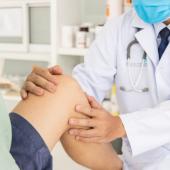
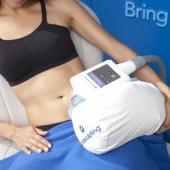





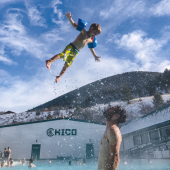

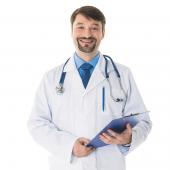
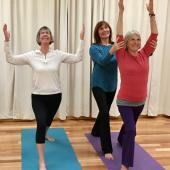
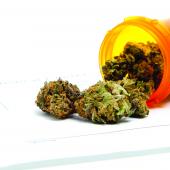
Leave a Comment Here